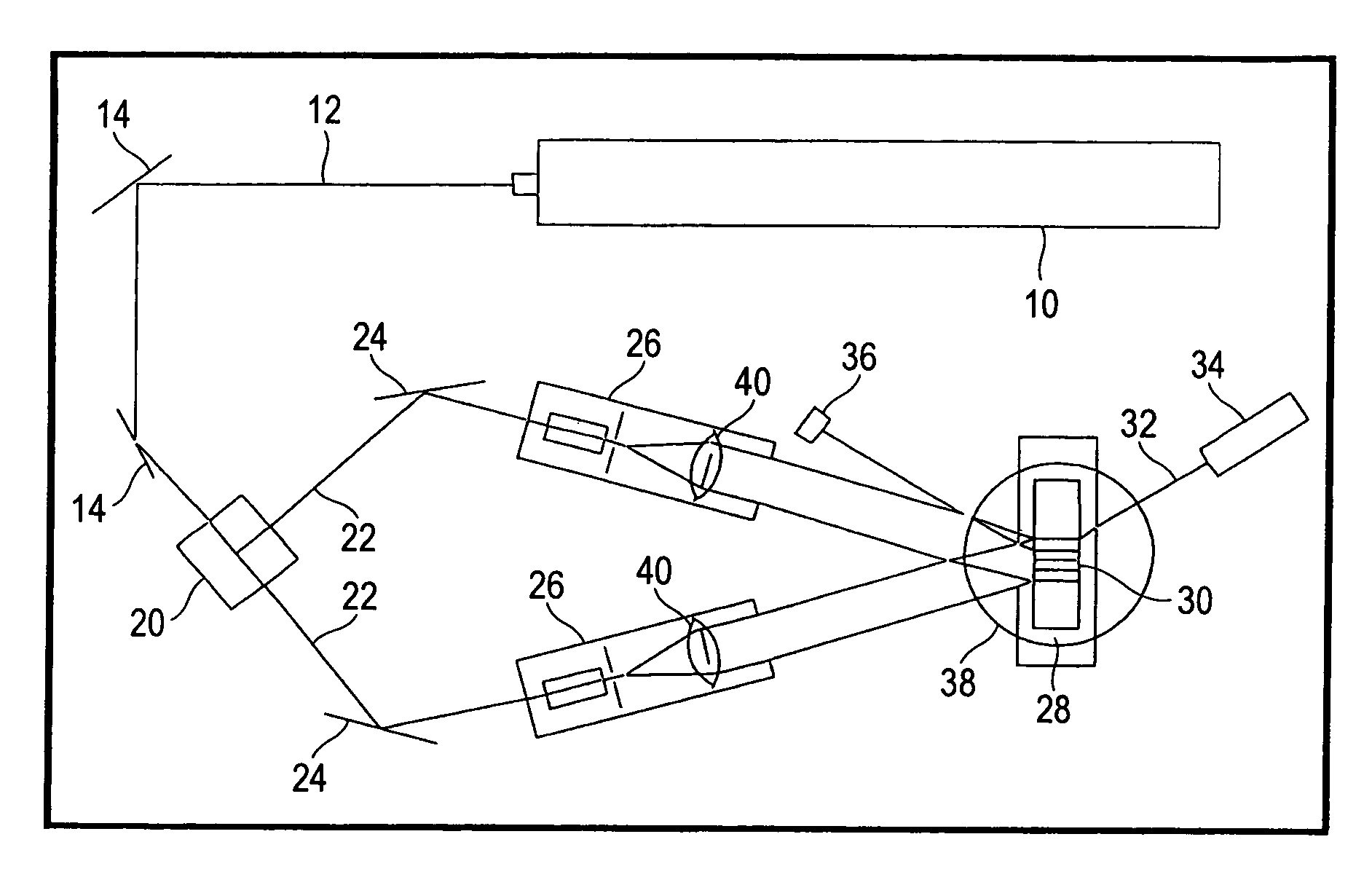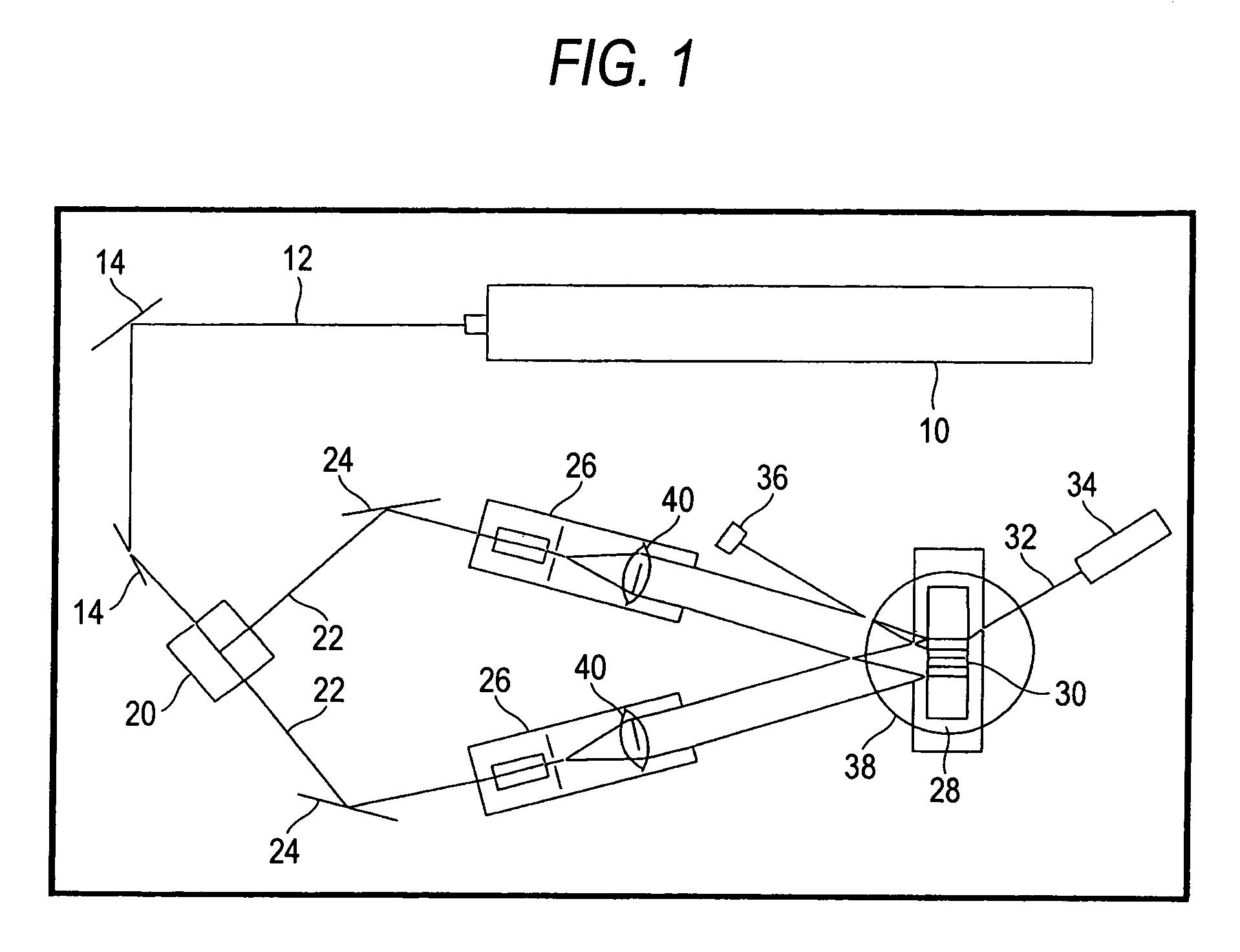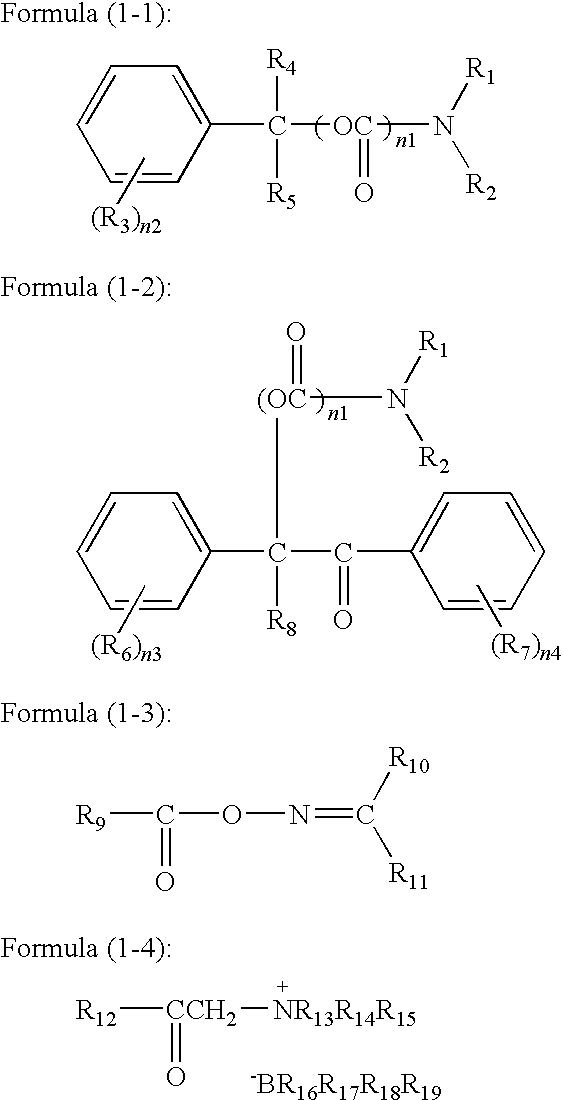Hologram recording method and hologram recording material
a recording method and hologram technology, applied in the field of hologram recording materials and hologram recording methods, can solve the problems of phase hologram capable of realizing, white color reproduction, and inability to achieve full color formation of surface-relief phase holograms, and achieve linear increase in refractive index modulation for the exposure amount, high sensitivity, and high diffraction efficiency.
- Summary
- Abstract
- Description
- Claims
- Application Information
AI Technical Summary
Benefits of technology
Problems solved by technology
Method used
Image
Examples
example 1
[0632]Under red light, a sensitizing dye, an electron-donating compound, dye precursor group+a polymerization initiator, a polymerizable compound and a binder shown in Table 1 were dissolved in a methylene chloride of 2 to 5 times amount (acetone, acetonitrile or methanol being also employed if necessary) to prepare Hologram Recording Materials 101 to 106. Percentages are shown in wt. %.
[0633]
[0634]
TABLE 1SensitizingElectron-donatingDye Precursor GroupPolymerizableSampleDyeCompoundPolymerization InitiatorCompoundBinder101D-118 (0.8%)ED-1 (10%)R-3 (5%) + I-104 (20%)M-1 (32.2%)Polydimethyl-siloxane (32%)102D-117 (0.4%)ED-1 (10%)R-3 (5%) + I-104 (20%)POEA:NVC = 2:1polyvinyl acetal(32.6%)(32%)103D-115 (0.2%)ED-1 (10%)PB-3 (20%) + DD-47 (5%)M-2 (32.8%)poly(methylphenyl)-siloxane (32%)104D-118 (0.8%)ED-1 (10%)ES-1 (10%) + O—Cl-HABI (3%)POEA:NA = 4:1cellulose(36.2%)acetate butyrate(40%)105D-117 (0.4%)ED-1 (10%)E-12 (20%) +POEA:NVC = 2:1polymethylO—Cl-HABI (1.8%) + MBO (1.2%)(30.6%)methacry...
PUM
| Property | Measurement | Unit |
|---|---|---|
| pKa | aaaaa | aaaaa |
| thickness | aaaaa | aaaaa |
| wavelength | aaaaa | aaaaa |
Abstract
Description
Claims
Application Information
 Login to View More
Login to View More - R&D
- Intellectual Property
- Life Sciences
- Materials
- Tech Scout
- Unparalleled Data Quality
- Higher Quality Content
- 60% Fewer Hallucinations
Browse by: Latest US Patents, China's latest patents, Technical Efficacy Thesaurus, Application Domain, Technology Topic, Popular Technical Reports.
© 2025 PatSnap. All rights reserved.Legal|Privacy policy|Modern Slavery Act Transparency Statement|Sitemap|About US| Contact US: help@patsnap.com



